#three poems for Tevis
Explore tagged Tumblr posts
Text
Wally Swist: Three Poems for Tevis
Lion’s RoarsAll day staying one step ahead of the loss and sorrow, only to find myself overcome by it all when I am caught by the sheer exhaustion that finally pulls me down. You are everywhere in my rearranging your room after the movers brought what you were allowed to fit into your suite in the Alzheimer’s community, neither one of us ready for your departure from the house you loved, books…
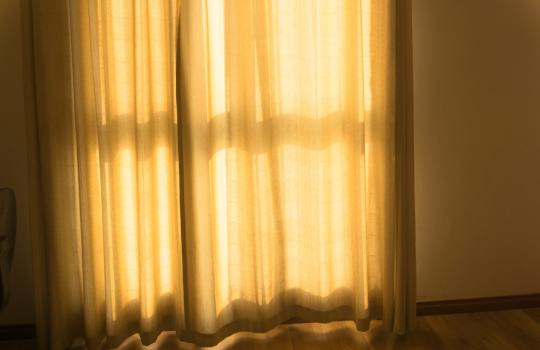
View On WordPress
#Alzheimer&039;s#care home#dementia#elegies#Growing Old#husbands and wives#three poems for Tevis#Wally Swist
0 notes
Text
All The Books I Read In 2020
Here she is! The full list of books I read in 2020. My goal was to read 52 books again this year, but once lockdown started I upped it to 100, and I ultimately surpassed even that goal!! I think reading is so important for my personal growth and mental health, so the last two years I have made reading a big priority in my life, and it is the best choice I could have made. This year especially, I found reading to be such a comfort and such a great tool for keeping the quarantine blues at bay. Here’s to all the books I read in 2020, and all the books I will read in 2021!
132 books, 44,531 pages, and a refreshed passion for learning and growth:
The Kite Runner- Khaled Hosseini (372 pgs) 4.5
A Discovery of Witches- Deborah Harkness (579 pgs) 2.75
The Call of the Wild and Selected Stories- Jack London (176 pgs) 4
I Wear The Black Hat -Chuck Klosterman (225 pgs) 3.75
Digital Fortress- Dan Brown (430 pgs) 3.75
Night Boat to Tangier- Kevin Barry (224 pgs) 2
The Chemist- Stephanie Meyer (518 pgs) 3
Find Me- Andre Aciman (272 pgs) 3.5
A Walk In The Woods- Bill Bryson (394 pgs) 4.5
Invisible Monsters- Chuck Palahniuk (304 pgs) 2.5
Underland, A Deep Time Journey- Robert MacFarlane (496 pgs) 3.25
The Dutch House -Ann Patchett (337 pgs) 5
Notes From a Small Island -Bill Bryson (324 pgs) 3.75
Home Work -Julie Andrews (560 pgs) 3.5
100 Essential Things You Didn’t Know About Maths and The Arts- John D. Barrow (320 pgs) 2.25
On the Road -Jack Kerouac (307 pgs) 3.5
Train Dreams -Denis Johnson (116 pgs) 4.25
2001: A Space Odyssey -Arthur C. Clarke (297 pgs) 4.75
Educated: A Memoir -Tara Westover (334 pgs) 5
Carrie -Stephen King (253 pgs) 3.5
Dig. -A.S. King (394 pgs) 4
salt slow -Julia Armfield (208 pgs) 3
Don’t Call Us Dead -Danez Smith (96 pgs) 5
Convenience Store Woman -Sayaka Murata (163 pgs) 3.25
The Life and Times of the Thunderbolt Kid: A Memoir -Bill Bryson (288 pgs) 3.75
Who Moved My Cheese? -Spencer Johnson (96 pgs) 3.5
The Truth About Keeping Secrets -Savannah Brown (336 pgs) 4
All-American Poem -Matthew Dickman (85 pgs) 3.5
2010: Odyssey Two -Arthur C. Clarke (320 pgs) 4
Behind Her Eyes -Sarah Pinborough (307 pgs) 3
The Stand -Stephen King (1440 pgs) 4
On Earth We're Briefly Gorgeous- Ocean Vuong (246 pgs) 4.5
Homie: Poems -Danez Smith (96 pgs) 4
The Long Way to a Small, Angry Planet -Becky Chambers (516 pgs) 3.5
The Silent Patient -Alex Michealide (325 pgs) 3.75
Talking As Fast As I Can -Lauren Graham (205 pgs) 3.5
Gregor the Overlander -Suzanne Collins (326 pgs) 1.5
The Transmigration of Bodies -Yuri Herrera (112 pgs) 2.5
The Deep -Rivers Solomon (166 pgs) 4
The Last Man -Mary Shelley (478 pgs) 3
Oryx and Crake -Margaret Atwood (389 pgs) 4.25
One Summer: America, 1927 -Bill Bryson (456 pgs) 3.5
Aristotle and Dante Discover the Secrets of the Universe -Benjamin Alire Sáenz (359 pgs) 3
The Climb: Tragic Ambitions on Everest -Anatoli Boukreev (297 pgs) 3.75
2061: Odyssey Three -Arthur C. Clarke (302 pgs) 3
Where I Belong -Alan Doyle (315 pgs) 4
Humble Pi: When Math Goes Wrong in the Real World -Matt Parker (314 pgs) 4
Normal People -Sally Rooney (304 pgs) 4
Dinosaur Tales -Ray Bradbury (144 pgs) 3
Someday, Someday, Maybe -Lauren Graham (340 pgs) 3.25
The Power -Naomi Alderman (341 pgs) 4.25
Deception Point -Dan Brown (558 pgs) 2.5
3001: The Final Odyssey -Arthur C. Clarke (272 pgs) 3.75
The Ballad of Songbirds and Snakes -Suzanne Collins (540 pgs) 3.5
The Vegetarian-Han Kang (188 pgs) 3
The Map of Salt and Stars -Zeyn Joukhadar (368 pgs) 4.5
One Man’s Wilderness: An Alaskan Odyssey -Sam Keith (224 pgs) 4
11/22/63 -Stephen King (849 pgs) 4.5
The Ballad of Black Tom -Victor LaValle (149 pgs) 3.5
Girl With A Pearl Earring -Tracy Chevalier (233 pgs) 4
The Year of the Flood -Margaret Atwood (431 pgs) 3.5
In A Sunburned Country -Bill Bryson (335 pgs) 3
Disappearing Earth -Julia Phillips (312 pgs) 2.5
The Hidden Life of Trees -Peter Wohlleben (288 pgs) 3.5
The People in the Trees -Hanya Yanagihara (368 pgs) 4
Shadow of Night -Deborah Harkness (584 pgs) 3
High Fidelity -Nick Hornby (340 pgs) 3.5
If It Bleeds -Stephen King (528 pgs) 3.5
Sharp Objects -Gillian Flynn (254 pgs) 4
A Newfoundlander in Canada -Alan Doyle (244 pgs) 4
The Water Dancer -Ta-Nehisi Coates (406 pgs) 4
The Fellowship of the Ring -J.R.R. Tolkien (398 pgs) 5
The Bluest Eye -Toni Morrison (216 pgs) 4
Into the Wild -Jon Krakauer (207 pgs) 4
Fahrenheit 451 -Ray Bradbury (194 pgs) 4
Burial Rites -Hannah Kent (336 pgs) 4.5
The Poet X -Elizabeth Acevedo (368 pgs) 5
The End of October -Lawrence Wright (400 pgs) 1.5
Eleanor Oliphant is Completely Fine -Gail Honeyman (336 pgs) 3.5
Survivor -Chuck Palahniuk (304 pgs) 3.5
Every Song Ever -Ben Ratliff (272 pgs) 2
A Beautifully Foolish Endeavor -Hank Green (452 pgs) 4
The Time Traveler's Wife -Audrey Niffenegger (540 pgs) 3.5
The Body: A Guide for Occupants -Bill Bryson (450 pgs) 3
Mr. Mercedes -Stephen King (437 pgs) 3.5
Girl, Woman, Other -Bernardine Evaristo (453 pgs) 4.5
Midnight Sun -Stephenie Meyer (662 pgs) 2
The Maltese Falcon -Dashiell Hammett (213 pgs) 3
The Hunting Party -Lucy Foley (406 pgs) 4
The Hating Game -Sally Thorne (387 pgs) 2.5
My Year of Rest and Relaxation -Ottessa Moshfegh (304 pgs) 4
Real Life -Brandon Taylor (329 pgs) 4
My Sister the Serial Killer -Oyinkan Braithwaite (226 pgs) 4
The Answer Is...: Reflections on My Life -Alex Trebek (304 pgs) 3
Eileen -Ottessa Moshfegh (272 pgs) 3
Answering Back -Carol Ann Duffy (144 pgs) 4
Then She Was Gone -Lisa Jewell (359 pgs) 3.5
Death In Her Hands -Ottessa Moshfegh (259 pgs) 3.5
This Is How You Lose The Time War -Amal El-Mohtar, Max Gladstone (209 pgs) 4
The Goldfinch -Donna Tartt (771 pgs) 4.5
Shutter Island -Dennis Lehane (369 pgs) 3.5
The Devil All The Time -Donald Ray Pollock (261 pgs) 4
I'm Thinking of Ending Things -Iain Reid (241 pgs) 2
Bunny -Mona Awad (307 pgs) 3
The Snowman -Jo Nesbø (516 pgs) 2.5
Something Wicked This Way Comes -Ray Bradbury (293 pgs) 3
Pretty Little Liars -Sara Shepard (286 pgs) 1
Psycho -Robert Bloch (208 pgs) 3.5
Along Came a Spider -James Patterson (449 pgs) 3
American Psycho -Brett Easton Ellis (399 pgs) 4
Night Sky With Exit Wounds -Ocean Vuong (89 pgs) 4
Arctic Dreams -Barry Lopez (496 pgs) 4
Four Colors Suffice -Robin Wilson (280 pgs) 4.5
My Grandmother Asked Me To Tell You She's Sorry -Fredrik Backman (372 pgs) 3
Such A Fun Age -Kiley Reid (320 pgs) 4
In The Dream House -Carmen Maria Machado (251 pgs) 4.5
Beach Read -Emily Henry (361 pgs) 3.5
The Queen's Gambit -Walter Tevis (243 pgs) 3.5
The Book of Life -Deborah Harkness (561 pgs) 2.5
Atomic Habits -James Clear (319 pgs) 2.5
Heart Berries -Terese Marie Mailhot (143 pgs) 3
The Kiss Quotient -Helen Hoang (323 pgs) 3
Around The World In 80 Days -Jules Verne (252 pgs) 3
Dolores Claiborne -Stephen King (384 pgs) 4.5
Flatland -Edwin Abbott (96 pgs) 3.5
The Impossible Girl -Lydia Kang (364 pgs) 2.5
Alice's Adventures in Wonderland & Through The looking Glass -Lewis Carroll (239 pgs) 3.5
Kiss The Girls -James Patterson (481 pgs) 2
The Bride Test -Helen Hoang (296 pgs) 2.5
In A Holidaze -Christina Lauren (307 pgs) 3.5
‘Twas The Knife Before Christmas -Jacqueline Frost (309 pgs) 2.5
The Great Alone -Kristin Hannah (435 pgs) 4
7 notes
·
View notes
Text
Tagging Game
Tagging Game
I was tagged by @darya-droid
Answer 20 questions and tag 20 followers
Name: Hmm... Which one to give you? Eh, friends tend to call me Mandy.
Nicknames: Mandy.
Zodiac: Scorpio
Height: 5′ 0″ but my ID says 5′2. My mother (at the time) thought it would boost my confidence to fib a little about my height and I never cared enough to try to fix it.
Languages: English, a little German.
Nationality: American
Favorite Seasons: Autumn
Favorite Flower: Night blooming Jasmine and White roses. I also like white gardenia.
Favorite Scents: Hmm. Tough call. Autumn air has a particularly pleasant scent to me. Apples and pumpkins and dried leaves. The smell of harvest and dried leaves carried on crisp air. Yes, that! That scent right there.
Favorite Color: Black, crimson, and dark blue.
Favorite Animals: Wolves, bats, ravens, crows, cats, foxes and barn owls.
Favorite Fictional Characters: (This is subject to change based on the alternating of my obsessions). In books: Morpheus in Neil Gaiman’s The Sandman, Dracula in Fred Saberhagen’s Dracula books (and Stoker’s original version as well, of course), Frankenstein’s Monster in Mary Shelley’s Frankenstein, Faust in Goethe’s Faust Parts 1 and 2, Jack Skellington in the Nightmare before Christmas (original poem), Loki in The Gospel of Loki by Joanne Harris, Robin Goodfellow from A Midsummer Night’s Dream by William Shakespeare, Thomas Jerome Newton in The Man who fell to Earth by Walter Tevis, Dorian Gray in The Picture of Dorian Gray by Oscar Wilde, Sir Simon de Canterville from The Canterville Ghost by Oscar Wilde, Belle in La Belle et la Bête by Gabrielle-Suzanne Barbot de Villeneuve, Captain Greg in The Ghost and Mrs. Muir, Jean Valjean in Les Miserables, In comics: Morpheus, Cain and Abel, Lucien in Neil Gaiman’s The Sandman, Nightmare, Dracula, Loki, Spider-Man, and Morbius in Marvel comics. Frankenstein’s Monster in Frankenstein Alive, alive from IDW, Dracula in Dracula: The Company of Monsters from Boom comics (A very underrated story), Peter Vincent in the Fright Night comics from Now Comics. The Crypt Keeper, Vault Keeper, and old Witch from EC comics. TV characters: Dracula in Castlevania, Lisa in Castlevania, Egon Spengler in The Real Ghostbusters, Cain from that one episode of Justice League action (Trick or Threat), the Crypt Keeper from Tales from the Crypt and Tales from the Cryptkeeper animated series. Barnabas Collins in Dark Shadows (1960s version and 1990s version), Harry Dresden and Bob in The Dresden Files, Lauren in Lost Girl, Loki in Ultimate Spider-Man and Avengers Assemble. Lydia and Beetlejuice from the Beetlejuice animated series, Zummi from The Adventures of The Gummi Bears, Puck from Disney’s Gargoyles, The Creature (Frankenstein’s Monster) from Penny Dreadful, Rumplestiltskin from Once Upon a Time. Movie characters: Belle from Disney’s Beauty and the Beast (animated version only), Faust in the 1926 silent film version of Faust, Peter Vincent in Fright Night (Original 1985 version), Jack Skellington and Sally from Tim Burton’s The Nightmare before Christmas, Jareth from Labyrinth, Ichabod Crane from Sleepy Hollow (1999), Captain Greg in The Ghost and Mrs. Muir, Emily from The Corpse Bride, Doctor Craven from The Raven (1963), Loki in the Marvel Cinematic Universe, Dracula in Bram Stoker’s Dracula, The Frankenstein monster in the 2004 Hallmark mini-series version of Frankenstein starring Luke Goss (the only version to truly follow the novel), Abe Sapien in the Hellboy movies (except the remake).
Favorite Hot Beverage: Tea.
Average Amount of Sleep: Seven and a half hours is best but lately it’s broken into four to three hour shifts.
Dogs or Cats: Both though I only have cats.
Number of Blankets: Depends on how cold or hot it is. Usually at least one.
Dream Trip: London England, The black Forest in Germany, all over Europe really.
Blog Established: 2014 or so. I was into Once upon a Time at the time, wanted in on the Tumblr fandom. Not sure if that was a good thing in retrospect...
Followers: 2,021, but I think a good amount are bots or inactive
Random Fun Fact: Hocus Pocus was actually theatrically released in the summer of 1993.
@sorry-for-the-chocolate @endlessemptynight @lamb90 @thesaramonster @treebrooke79 @zal001 @missghostlymoonshadow @watertribe-enya @artwinsdraws @winterbirdybuddy @livingauthorssociety @jr4cats @everthewildeone @kaimaciel @mrgoldsshopofhorrors @unnecessaryhorns @penguinssupersecretsafehouse @drawing-down-th3-moon @good-times-bad-food @hellowhatwhythings
If anyone I’ve forgotten to tag wan ts to take part in this, go right ahead. Feel perfectly free.
9 notes
·
View notes
Text
Pandemic Unveils Growing Suicide Crisis for Communities of Color
This story is a collaboration between KHN and “Science Friday.” Listen to the conversation between KHN national correspondent Aneri Pattani and John Dankosky, Science Friday’s director of news and radio projects.
Rafiah Maxie has been a licensed clinical social worker in the Chicago area for a decade. Throughout that time, she’d viewed suicide as a problem most prevalent among middle-aged white men.
Until May 27, 2020.
That day, Maxie’s 19-year-old son, Jamal Clay — who loved playing the trumpet and participating in theater, who would help her unload groceries from the car and raise funds for the March of the Dimes — killed himself in their garage.
“Now I cannot blink without seeing my son hanging,” said Maxie, who is Black.
Clay’s death, along with the suicides of more than 100 other Black residents in Illinois last year, has led locals to call for new prevention efforts focused on Black communities. In 2020, during the pandemic’s first year, suicides among white residents decreased compared with previous years, while they increased among Black residents, according to state data.
But this is not a local problem. Nor is it limited to the pandemic.
If you or someone you know is in crisis, call the National Suicide Prevention Lifeline at 1-800-273-8255 or text HOME to the Crisis Text Line at 741741.
Interviews with a dozen suicide researchers, data collected from states across the country and a review of decades of research revealed that suicide is a growing crisis for communities of color — one that plagued them well before the pandemic and has only been exacerbated since.
Overall suicide rates in the U.S. decreased in 2019 and 2020. National and local studies attribute the trend to a drop among white Americans, who make up the majority of suicide deaths. Meanwhile, rates for Black, Hispanic and Asian Americans — though lower than their white peers — continued to climb in many states. (Suicide rates have been consistently high for Native Americans.)
“Covid created more transparency regarding what we already knew was happening,” said Sonyia Richardson, a licensed clinical social worker who focuses on serving people of color and an assistant professor at the University of North Carolina-Charlotte, where she researches suicide. When you put the suicide rates of all communities in one bucket, “that bucket says it’s getting better and what we’re doing is working,” she said. “But that’s not the case for communities of color.”
Losing Generations

Although the suicide rate is highest among middle-aged white men, young people of color are emerging as particularly at risk.
Research shows Black kids younger than 13 die by suicide at nearly twice the rate of white kids and, over time, their suicide rates have grown even as rates have decreased for white children. Among teenagers and young adults, suicide deaths have increased more than 45% for Black Americans and about 40% for Asian Americans in the seven years ending in 2019. Other concerning trends in suicide attempts date to the ’90s.
“We’re losing generations,” said Sean Joe, a national expert on Black suicide and a professor at Washington University in St. Louis. “We have to pay attention now because if you’re out of the first decade of life and think life is not worth pursuing, that’s a signal to say something is going really wrong.”
These statistics also refute traditional ideas that suicide doesn’t happen in certain ethnic or minority populations because they’re “protected” and “resilient” or the “model minority,” said Kiara Alvarez, a researcher and psychologist at Massachusetts General Hospital who focuses on suicide among Hispanic and immigrant populations.
Although these groups may have had low suicide rates historically, that’s changing, she said.
Paul Chin lost his 17-year-old brother, Chris, to suicide in 2009. A poem Chris wrote in high school about his heritage has left Chin, eight years his senior, wondering if his brother struggled to feel accepted in the U.S., despite being born and raised in New York.
Growing up, Asian Americans weren’t represented in lessons at school or in pop culture, said Chin, now 37. Even in clinical research on suicide as well as other health topics, kids like Chris are underrepresented, with less than 1% of federal research funding focused on Asian Americans.
It wasn’t until the pandemic, and the concurrent rise in hate crimes against Asian Americans, that Chin saw national attention on the community’s mental health. He hopes the interest is not short-lived.
Suicide is the leading cause of death for Asian Americans ages 15 to 24, yet “that doesn’t get enough attention,” Chin said. “It’s important to continue to share these stories.”
Kathy Williams, who is Black, has been on a similar mission since her 15-year-old son, Torian Graves, died by suicide in 1996. People didn’t talk about suicide in the Black community then, she said. So she started raising the topic at her church in Durham, North Carolina, and in local schools. She wanted Black families to know the warning signs and society at large to recognize the seriousness of the problem.
The pandemic may have highlighted this, Williams said, but “it has always happened. Always.”
Pandemic Sheds Light on the Triggers
Pinpointing the root causes of rising suicide within communities of color has proven difficult. How much stems from mental illness? How much from socioeconomic changes like job losses or social isolation? Now, covid may offer some clues.
Recent decades have been marked by growing economic instability, a widening racial wealth gap and more public attention on police killings of unarmed Black and brown people, said Michael Lindsey, executive director of the New York University McSilver Institute for Poverty Policy and Research.
With social media, youths face racism on more fronts than their parents did, said Leslie Adams, an assistant professor in the department of mental health at Johns Hopkins Bloomberg School of Public Health.
Each of these factors has been shown to affect suicide risk. For example, experiencing racism and sexism together is linked to a threefold increase in suicidal thoughts for Asian American women, said Brian Keum, an assistant professor at UCLA, based on preliminary research findings.


Covid intensified these hardships among communities of color, with disproportionate numbers of lost loved ones, lost jobs and lost housing. The murder of George Floyd prompted widespread racial unrest, and Asian Americans saw an increase in hate crimes.
At the same time, studies in Connecticut and Maryland found that suicide rates rose within these populations and dropped for their white counterparts.
“It’s not just a problem within the person, but societal issues that need to be addressed,” said Shari Jager-Hyman, an assistant professor of psychiatry at the University of Pennsylvania’s school of medicine.
Lessons From Texas
In Texas, covid hit Hispanics especially hard. As of July 2021, they accounted for 45% of all covid deaths and disproportionately lost jobs. Individuals living in the U.S. without authorization were generally not eligible for unemployment benefits or federal stimulus checks.
During this time, suicide deaths among Hispanic Texans climbed from 847 deaths in 2019 to 962 deaths in 2020, according to preliminary state data. Suicide deaths rose for Black Texans and residents classified as “other” races or ethnicities, but decreased for white Texans.
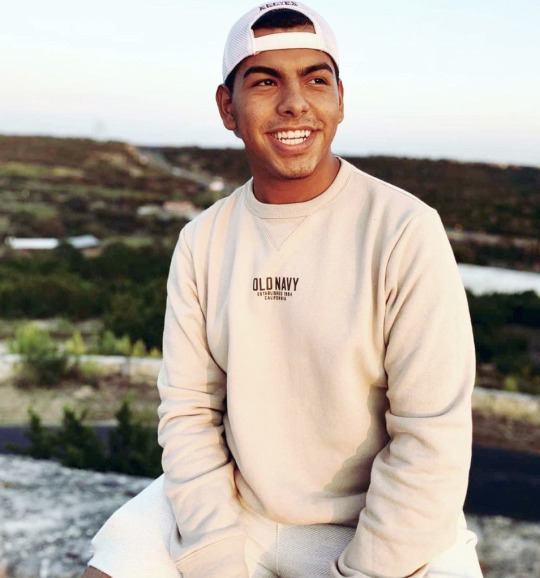
The numbers didn’t surprise Marc Mendiola. The 20-year-old grew up in a majority-Hispanic community on the south side of San Antonio. Even before the pandemic, he often heard classmates say they were suicidal. Many faced dire finances at home, sometimes living without electricity, food or water. Those who sought mental health treatment often found services prohibitively expensive or inaccessible because they weren’t offered in Spanish.
“These are conditions the community has always been in,” Mendiola said. “But with the pandemic, it’s even worse.”
Four years ago, Mendiola and his classmates at South San High School began advocating for mental health services. In late 2019, just months before covid struck, their vision became reality. Six community agencies partnered to offer free services to students and their families across three school districts.
Richard Davidson, chief operating officer of Family Service, one of the groups in the collaborative, said the number of students discussing economic stressors has been on the rise since April 2020. More than 90% of the students who received services in the first half of 2021 were Hispanic, and nearly 10% reported thoughts of suicide or self-harm, program data shows. None died by suicide.
Many students are so worried about what’s for dinner the next day that they’re not able to see a future beyond that, Davidson said. That’s when suicide can feel like a viable option.
“One of the things we do is help them see … that despite this situation now, you can create a vision for your future,” Davidson said.
A Good Future
Researchers say the promise of a good future is often overlooked in suicide prevention, perhaps because achieving it is so challenging. It requires economic and social growth and breaking systemic barriers.
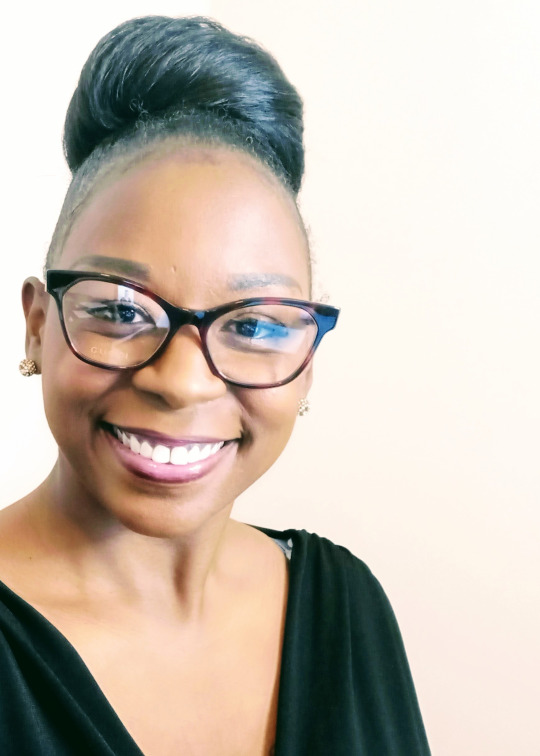
Tevis Simon works to address all those fronts. As a child in West Baltimore, Simon, who is Black, faced poverty and trauma. As an adult, she attempted suicide three times. But now she shares her story with youths across the city to inspire them to overcome challenges. She also talks to politicians, law enforcement agencies and public policy officials about their responsibilities.
“We can’t not talk about race,” said Simon, 43. “We can’t not talk about systematic oppression. We cannot not talk about these conditions that affect our mental well-being and our feeling and desire to live.”
For Jamal Clay in Illinois, the systemic barriers started early. Before his suicide last year, he had tried to harm himself when he was 12 and the victim of bullies. At that time, he was hospitalized for a few days and told to follow up with outpatient therapy, said his mother, Maxie.
But it was difficult to find therapists who accepted Medicaid, she said. When Maxie finally found one, there was a 60-day wait. Other therapists canceled appointments, she said.
“So we worked on our own,” Maxie said, relying on church and community. Her son seemed to improve. “We thought we closed that chapter in our lives.”
But when the pandemic hit, everything got worse, she said. Clay came home from college and worked at an Amazon warehouse. On drives to and from work, he was frequently pulled over by police. He stopped wearing hats so officers would consider him less intimidating, Maxie said.
“He felt uncomfortable being out in the street,” she said.
Maxie is still trying to make sense of what happened the day Clay died. But she’s found meaning in starting a nonprofit called Soul Survivors of Chicago. Through the organization, she provides education, scholarships and shoes — including Jamal’s old ones — to those impacted by violence, suicide and trauma.
“My son won’t be able to have a first interview in [those] shoes. He won’t be able to have a nice jump shot or go to church or even meet his wife,” Maxie said.
But she hopes his shoes will carry someone else to a good future.
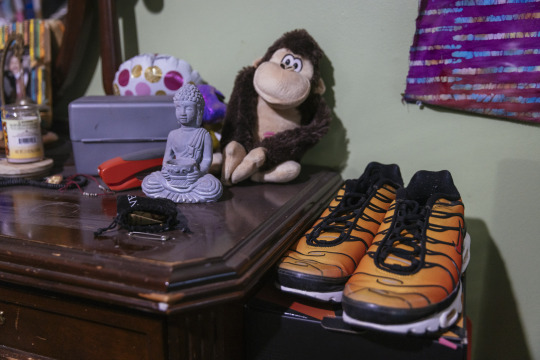
If you or someone you know is in crisis, call the National Suicide Prevention Lifeline at 1-800-273-8255 or text HOME to the Crisis Text Line at 741741.
KHN senior correspondent JoNel Aleccia contributed to this report.
[Editor’s note: For the purposes of this story, “people of color” or “communities of color” refers to any racial or ethnic populations whose members do not identify as white, including those who are multiracial. Hispanics can be of any race or combination of races.]
KHN (Kaiser Health News) is a national newsroom that produces in-depth journalism about health issues. Together with Policy Analysis and Polling, KHN is one of the three major operating programs at KFF (Kaiser Family Foundation). KFF is an endowed nonprofit organization providing information on health issues to the nation.
USE OUR CONTENT
This story can be republished for free (details).
Pandemic Unveils Growing Suicide Crisis for Communities of Color published first on https://nootropicspowdersupplier.tumblr.com/
0 notes
Text
Pandemic Unveils Growing Suicide Crisis for Communities of Color
This story is a collaboration between KHN and “Science Friday.” Listen to the conversation between KHN national correspondent Aneri Pattani and John Dankosky, Science Friday’s director of news and radio projects.
Rafiah Maxie has been a licensed clinical social worker in the Chicago area for a decade. Throughout that time, she’d viewed suicide as a problem most prevalent among middle-aged white men.
Until May 27, 2020.
That day, Maxie’s 19-year-old son, Jamal Clay — who loved playing the trumpet and participating in theater, who would help her unload groceries from the car and raise funds for the March of the Dimes — killed himself in their garage.
“Now I cannot blink without seeing my son hanging,” said Maxie, who is Black.
Clay’s death, along with the suicides of more than 100 other Black residents in Illinois last year, has led locals to call for new prevention efforts focused on Black communities. In 2020, during the pandemic’s first year, suicides among white residents decreased compared with previous years, while they increased among Black residents, according to state data.
But this is not a local problem. Nor is it limited to the pandemic.
If you or someone you know is in crisis, call the National Suicide Prevention Lifeline at 1-800-273-8255 or text HOME to the Crisis Text Line at 741741.
Interviews with a dozen suicide researchers, data collected from states across the country and a review of decades of research revealed that suicide is a growing crisis for communities of color — one that plagued them well before the pandemic and has only been exacerbated since.
Overall suicide rates in the U.S. decreased in 2019 and 2020. National and local studies attribute the trend to a drop among white Americans, who make up the majority of suicide deaths. Meanwhile, rates for Black, Hispanic and Asian Americans — though lower than their white peers — continued to climb in many states. (Suicide rates have been consistently high for Native Americans.)
“Covid created more transparency regarding what we already knew was happening,” said Sonyia Richardson, a licensed clinical social worker who focuses on serving people of color and an assistant professor at the University of North Carolina-Charlotte, where she researches suicide. When you put the suicide rates of all communities in one bucket, “that bucket says it’s getting better and what we’re doing is working,” she said. “But that’s not the case for communities of color.”
Losing Generations
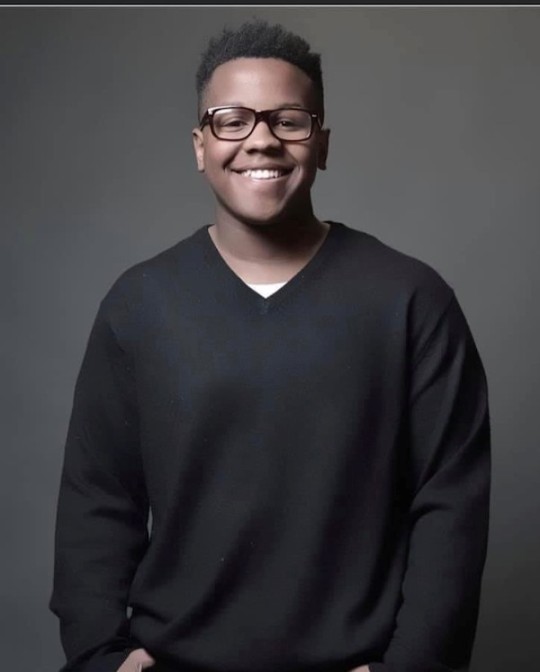
Although the suicide rate is highest among middle-aged white men, young people of color are emerging as particularly at risk.
Research shows Black kids younger than 13 die by suicide at nearly twice the rate of white kids and, over time, their suicide rates have grown even as rates have decreased for white children. Among teenagers and young adults, suicide deaths have increased more than 45% for Black Americans and about 40% for Asian Americans in the seven years ending in 2019. Other concerning trends in suicide attempts date to the ’90s.
“We’re losing generations,” said Sean Joe, a national expert on Black suicide and a professor at Washington University in St. Louis. “We have to pay attention now because if you’re out of the first decade of life and think life is not worth pursuing, that’s a signal to say something is going really wrong.”
These statistics also refute traditional ideas that suicide doesn’t happen in certain ethnic or minority populations because they’re “protected” and “resilient” or the “model minority,” said Kiara Alvarez, a researcher and psychologist at Massachusetts General Hospital who focuses on suicide among Hispanic and immigrant populations.
Although these groups may have had low suicide rates historically, that’s changing, she said.
Paul Chin lost his 17-year-old brother, Chris, to suicide in 2009. A poem Chris wrote in high school about his heritage has left Chin, eight years his senior, wondering if his brother struggled to feel accepted in the U.S., despite being born and raised in New York.
Growing up, Asian Americans weren’t represented in lessons at school or in pop culture, said Chin, now 37. Even in clinical research on suicide as well as other health topics, kids like Chris are underrepresented, with less than 1% of federal research funding focused on Asian Americans.
It wasn’t until the pandemic, and the concurrent rise in hate crimes against Asian Americans, that Chin saw national attention on the community’s mental health. He hopes the interest is not short-lived.
Suicide is the leading cause of death for Asian Americans ages 15 to 24, yet “that doesn’t get enough attention,” Chin said. “It’s important to continue to share these stories.”
Kathy Williams, who is Black, has been on a similar mission since her 15-year-old son, Torian Graves, died by suicide in 1996. People didn’t talk about suicide in the Black community then, she said. So she started raising the topic at her church in Durham, North Carolina, and in local schools. She wanted Black families to know the warning signs and society at large to recognize the seriousness of the problem.
The pandemic may have highlighted this, Williams said, but “it has always happened. Always.”
Pandemic Sheds Light on the Triggers
Pinpointing the root causes of rising suicide within communities of color has proven difficult. How much stems from mental illness? How much from socioeconomic changes like job losses or social isolation? Now, covid may offer some clues.
Recent decades have been marked by growing economic instability, a widening racial wealth gap and more public attention on police killings of unarmed Black and brown people, said Michael Lindsey, executive director of the New York University McSilver Institute for Poverty Policy and Research.
With social media, youths face racism on more fronts than their parents did, said Leslie Adams, an assistant professor in the department of mental health at Johns Hopkins Bloomberg School of Public Health.
Each of these factors has been shown to affect suicide risk. For example, experiencing racism and sexism together is linked to a threefold increase in suicidal thoughts for Asian American women, said Brian Keum, an assistant professor at UCLA, based on preliminary research findings.
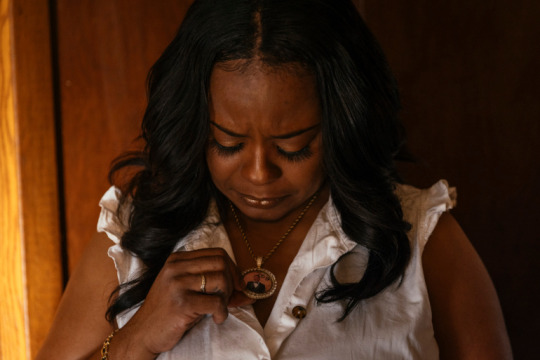
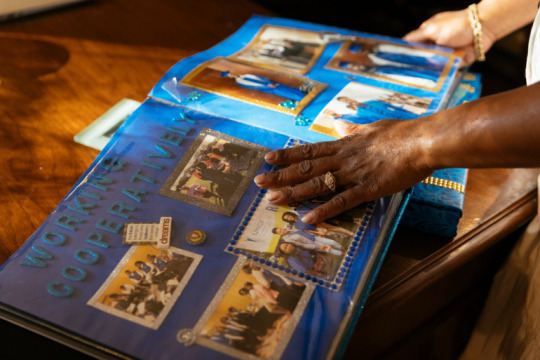
Covid intensified these hardships among communities of color, with disproportionate numbers of lost loved ones, lost jobs and lost housing. The murder of George Floyd prompted widespread racial unrest, and Asian Americans saw an increase in hate crimes.
At the same time, studies in Connecticut and Maryland found that suicide rates rose within these populations and dropped for their white counterparts.
“It’s not just a problem within the person, but societal issues that need to be addressed,” said Shari Jager-Hyman, an assistant professor of psychiatry at the University of Pennsylvania’s school of medicine.
Lessons From Texas
In Texas, covid hit Hispanics especially hard. As of July 2021, they accounted for 45% of all covid deaths and disproportionately lost jobs. Individuals living in the U.S. without authorization were generally not eligible for unemployment benefits or federal stimulus checks.
During this time, suicide deaths among Hispanic Texans climbed from 847 deaths in 2019 to 962 deaths in 2020, according to preliminary state data. Suicide deaths rose for Black Texans and residents classified as “other” races or ethnicities, but decreased for white Texans.
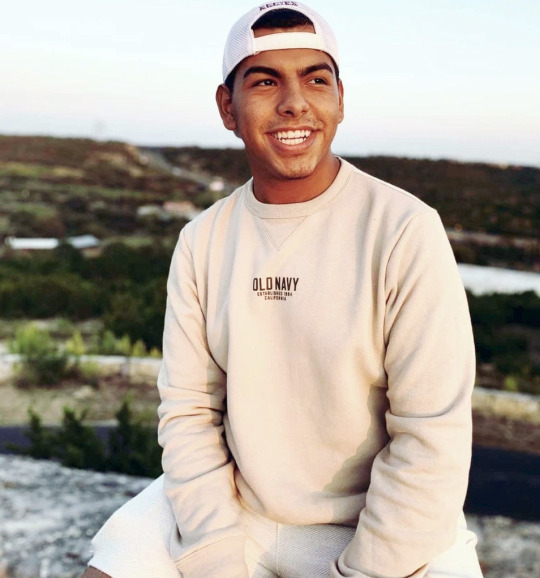
The numbers didn’t surprise Marc Mendiola. The 20-year-old grew up in a majority-Hispanic community on the south side of San Antonio. Even before the pandemic, he often heard classmates say they were suicidal. Many faced dire finances at home, sometimes living without electricity, food or water. Those who sought mental health treatment often found services prohibitively expensive or inaccessible because they weren’t offered in Spanish.
“These are conditions the community has always been in,” Mendiola said. “But with the pandemic, it’s even worse.”
Four years ago, Mendiola and his classmates at South San High School began advocating for mental health services. In late 2019, just months before covid struck, their vision became reality. Six community agencies partnered to offer free services to students and their families across three school districts.
Richard Davidson, chief operating officer of Family Service, one of the groups in the collaborative, said the number of students discussing economic stressors has been on the rise since April 2020. More than 90% of the students who received services in the first half of 2021 were Hispanic, and nearly 10% reported thoughts of suicide or self-harm, program data shows. None died by suicide.
Many students are so worried about what’s for dinner the next day that they’re not able to see a future beyond that, Davidson said. That’s when suicide can feel like a viable option.
“One of the things we do is help them see … that despite this situation now, you can create a vision for your future,” Davidson said.
A Good Future
Researchers say the promise of a good future is often overlooked in suicide prevention, perhaps because achieving it is so challenging. It requires economic and social growth and breaking systemic barriers.
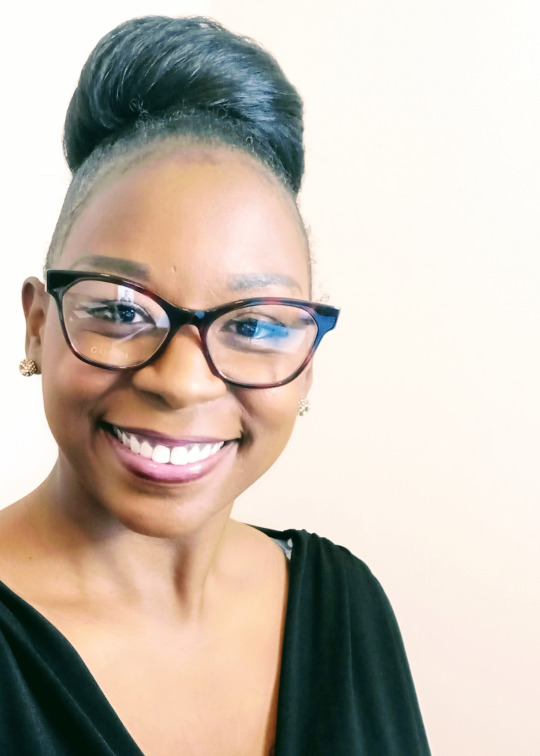
Tevis Simon works to address all those fronts. As a child in West Baltimore, Simon, who is Black, faced poverty and trauma. As an adult, she attempted suicide three times. But now she shares her story with youths across the city to inspire them to overcome challenges. She also talks to politicians, law enforcement agencies and public policy officials about their responsibilities.
“We can’t not talk about race,” said Simon, 43. “We can’t not talk about systematic oppression. We cannot not talk about these conditions that affect our mental well-being and our feeling and desire to live.”
For Jamal Clay in Illinois, the systemic barriers started early. Before his suicide last year, he had tried to harm himself when he was 12 and the victim of bullies. At that time, he was hospitalized for a few days and told to follow up with outpatient therapy, said his mother, Maxie.
But it was difficult to find therapists who accepted Medicaid, she said. When Maxie finally found one, there was a 60-day wait. Other therapists canceled appointments, she said.
“So we worked on our own,” Maxie said, relying on church and community. Her son seemed to improve. “We thought we closed that chapter in our lives.”
But when the pandemic hit, everything got worse, she said. Clay came home from college and worked at an Amazon warehouse. On drives to and from work, he was frequently pulled over by police. He stopped wearing hats so officers would consider him less intimidating, Maxie said.
“He felt uncomfortable being out in the street,” she said.
Maxie is still trying to make sense of what happened the day Clay died. But she’s found meaning in starting a nonprofit called Soul Survivors of Chicago. Through the organization, she provides education, scholarships and shoes — including Jamal’s old ones — to those impacted by violence, suicide and trauma.
“My son won’t be able to have a first interview in [those] shoes. He won’t be able to have a nice jump shot or go to church or even meet his wife,” Maxie said.
But she hopes his shoes will carry someone else to a good future.

If you or someone you know is in crisis, call the National Suicide Prevention Lifeline at 1-800-273-8255 or text HOME to the Crisis Text Line at 741741.
KHN senior correspondent JoNel Aleccia contributed to this report.
[Editor’s note: For the purposes of this story, “people of color” or “communities of color” refers to any racial or ethnic populations whose members do not identify as white, including those who are multiracial. Hispanics can be of any race or combination of races.]
KHN (Kaiser Health News) is a national newsroom that produces in-depth journalism about health issues. Together with Policy Analysis and Polling, KHN is one of the three major operating programs at KFF (Kaiser Family Foundation). KFF is an endowed nonprofit organization providing information on health issues to the nation.
USE OUR CONTENT
This story can be republished for free (details).
Pandemic Unveils Growing Suicide Crisis for Communities of Color published first on https://nootropicspowdersupplier.tumblr.com/
0 notes